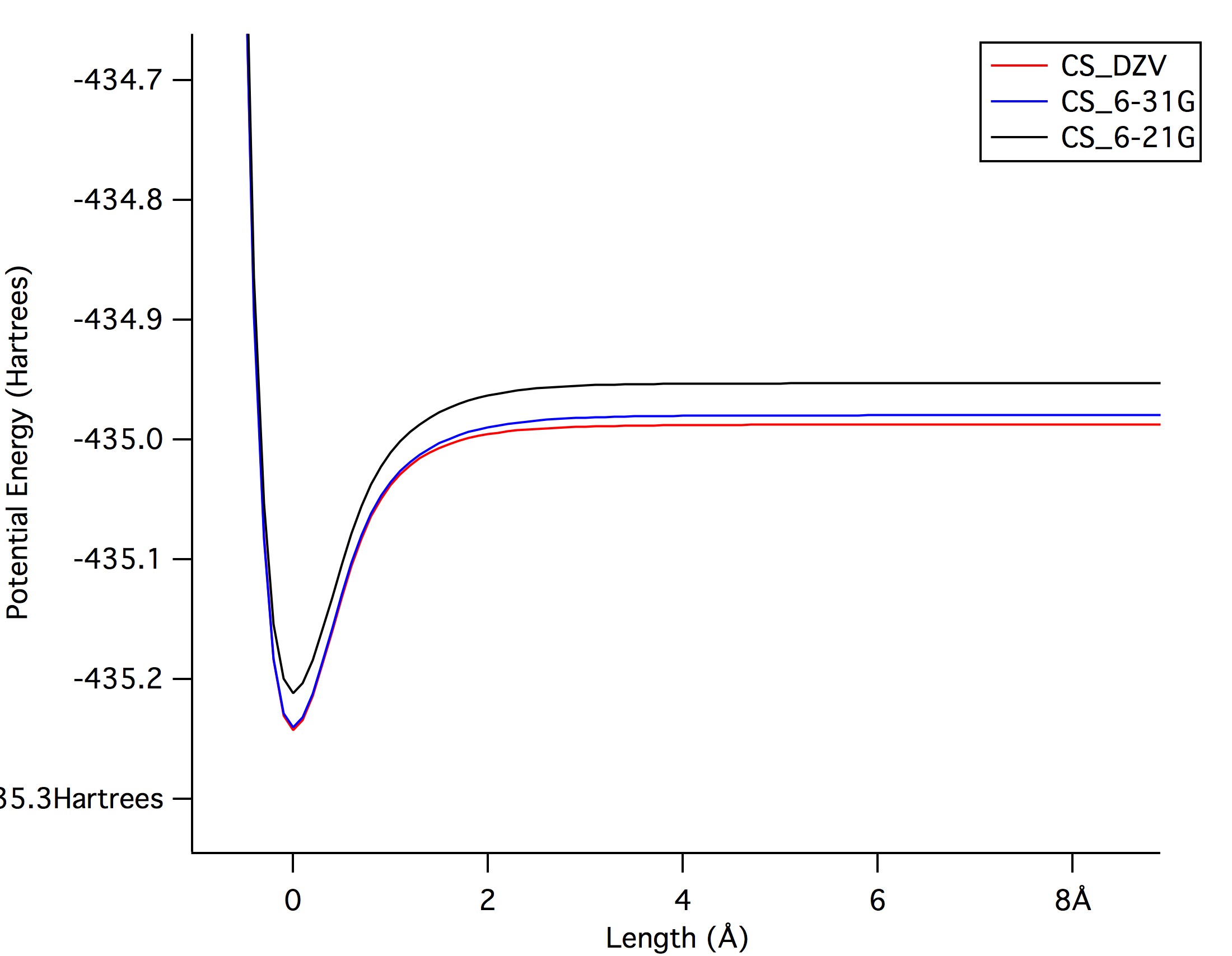
The graph above is a graph of the potential energy of
Carbon Monosulfide at the three different basis sets used, 6-21G, 6-31G
and DZV. The three basis sets are initially very similar as shown by the
first segment of overlapping lines. However, 6-21G represented by the
black line diverges from the other two basis sets and levels off at
approximately -435.95 Hartrees. The 6-31G and DZV basis sets stay close
together and both level off near -435.0 Hartrees. Despite their
closeness, it is still evident that the DZV basis set is slightly lower
in energy than the 6-31G basis set. The basis set with the lowest energy
is the best because a lower energy means that the molecule is more
stable. Therefore, the best basis set for Carbon Monosulfide is DZV.
This
is the electrostatic potential of the molecule. The red area represents
the lowest electrostatic potential and the blue area represents the
highest electrostatic potential. Any other color that is shown in
this diagram represents intermediate potentials.
| ||||||
The partial atomic charge on each atom is shown here. This is created by the electronegativity difference in each atom.
|